|

By Ian Cushway, 18th October 2019
MGA Buyer's Guide
Now's the time to grab an MGA gem while you still can!
Lively, agile and still reasonably affordable - it’s easy to see why the MGA has such a keen following. It’s a car that never fails to thrill and with excellent club support and good spares availability, owning one has never been easier. That said, never underestimate restoration costs and be wary about cars that look great from a distance but might be hiding all manner of horrors underneath. A visually tidy MGA selling for £12,000 may end up costing £35-£40,000 at the end of a nut and bolt rebuild. As always, it helps to buy a sound one in the first place - so here's what you need to know to help you get the best you can afford...
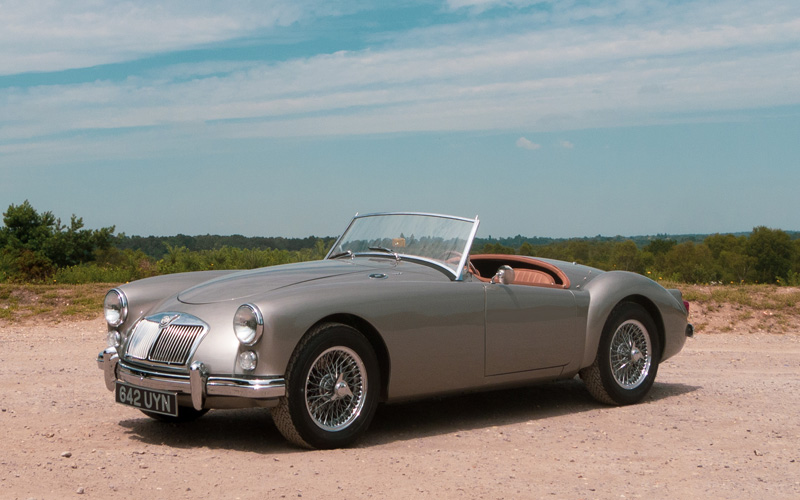
Credit: Photo by Moss Europe Ltd
What Is It?
Meant as a replacement for the TF, at launch in 1955 the MGA came in 1500 roadster guise featuring the well-tried 1489cc B-series engine and transmission. The fixed head coupé version arrived a year later. That was followed by the pokey 1588cc Twin Cam with its alloy cylinder head and Dunlop all-round disc brakes. Just 2,100 were made during its two-year production run, so it's rare and sought after. The 1600 replaced the 1500 in 1959 and with the extra displacement came front discs, stiffer suspension and proper sliding side windows. A year later the De Luxe appeared, borrowing a batch of leftover Twin Cam chassis with discs all round, but only a handful were produced. The MkII, offered as both roadster and coupé in either standard or De Luxe trim was launched in 1961 and boasted a slightly bigger bore 1622cc engine with bigger valves and reworked cylinder head as well as a higher ratio rear axle for more relaxed cruising. Visually the most notable change included Mini tail lamps appearing horizontally below the deck lid and a slightly inset grille. MGA production ceased, making way for the MGB, in June 1962 after a total of 101,081 variants had been produced.
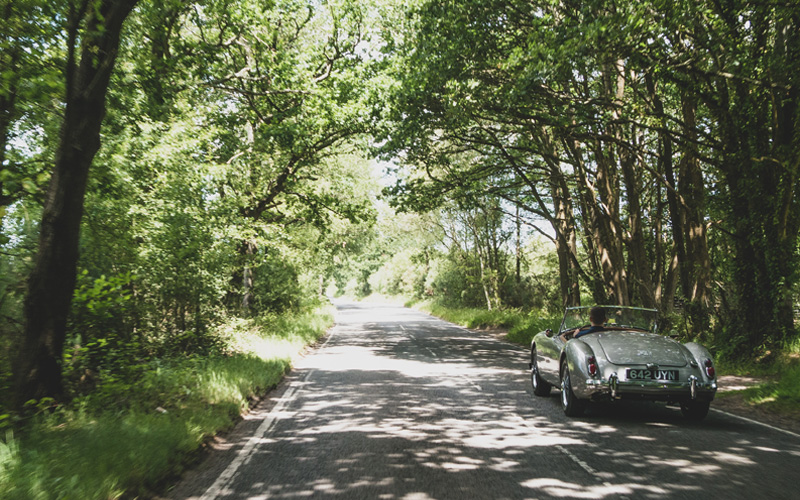
Credit: Photo by Moss Europe Ltd
What's It Like?
Owners tell us it feels tighter and much more rigid than pricier contemporaries like the Triumph TR3 and Austin-Healey. There’s no scuttle shake, it’s super-tight - more like a monocoque - and if you get a good one, it can make other cars from the same era feel a little antiquated in comparison. In a nutshell, it's possibly the best driving car you can get for the price and the handling and road holding is superb. Moreover, with a few upgrades, it's also very usable.
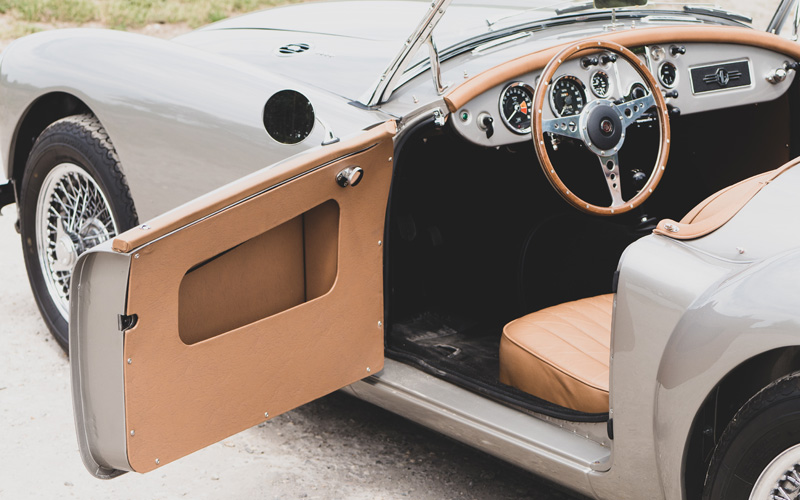
Credit: Photo by Moss Europe Ltd
Body Beautiful?
As always, rust will be at the top of your checklist when viewing cars. Inspect the chassis for accident damage and corrosion - it's the outer rails which go first, and look where the floor butts against the inner face of the rail by pulling the carpets back on the sills. Rot can also attack the rear body mounting bracket, the two crossmembers that brace the rear of the chassis and mounting points next to the door posts. Front wings go where the beaded edge and shroud meet, around the headlamps and along the wing edge next to the doorposts. Otherwise, the sills, A-posts, door bottoms, boot floor, door posts and battery cradles should also come under scrutiny. The bonnet, boot lid and doors have aluminum skins laid over a steel frame with a strip of wood inserted into the bonnet and bootlid to prevent dents. The wood invariably rots causing an electrolytic reaction which can be tricky to remedy. The floor is made from marine ply, so check for delamination if it becomes soggy. You should be able to find all of the parts you need to replace in our Body & Chassis range.
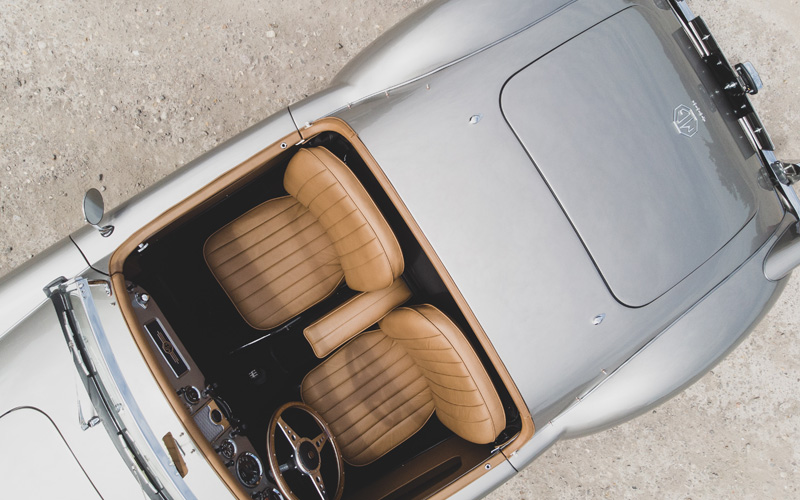
Credit: Photo by Moss Europe Ltd
Even Stevens?
Most MGAs will have undergone some restoration work in the past, but how well has it been done? Well, a quick way of telling is by looking at the panel gaps; if they're all over the place, then you might have to investigate further and perhaps do all the work again. A big chunk of MGAs were sold to US buyers across the pond, so getting a solid car from the States will help cut the cost of a resto. You can tell a car’s origins by its chassis number; a genuine RHD car will start with a 1, a ‘Completely Knocked Down’ (CKD) RHD kit will have a 5 prefix, a US LHD will begin with a 4 and 3 denotes an export LHD. A LHD CKD will begin with a 6.
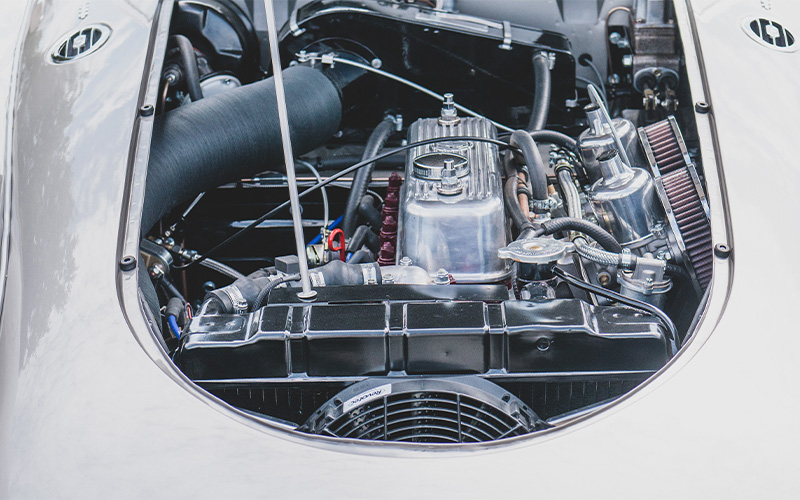
Credit: Photo by Moss Europe Ltd
Power to The People
The B-Series engine is long-lived but watch for tell-tale blue smoke which points to worn piston rings and/or cylinder bores. Oil pressure should be 50-60psi at 3,000rpm. Oil leaks aren’t uncommon (look for drips under the front and rear of the crank) and heads are known to crack, leading to water loss and the risk of head gasket failure with the associated white gunge evident on the underside of the oil filler cap. We sell reconditioned engines* starting around the £2,300 mark. *Please Note: Some products are only available on a COU (Customer’s Own Unit) basis. Therefore, we will require your own unit to be sent to us for reconditioning. Please contact your nearest Moss branch for further details. Under bonnet venting isn’t great on the MGA so we recommend fitting one of our Revotec cooling fan kits.
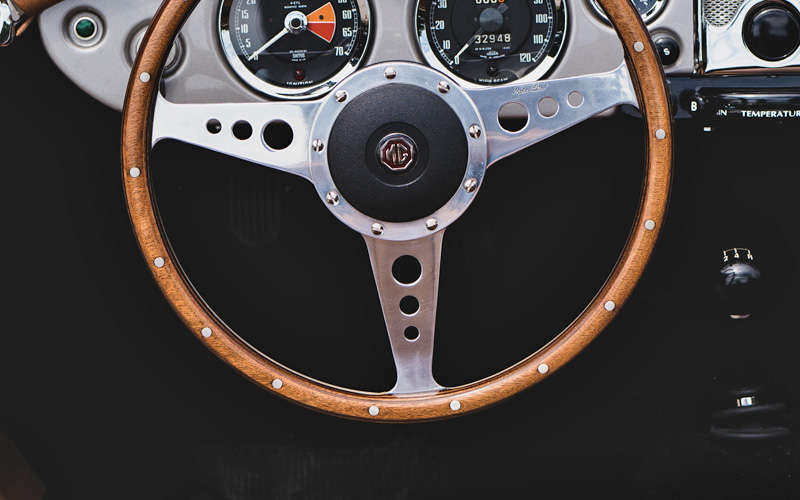
Credit: Photo by Moss Europe Ltd
In Gear
As first and reverse are straight cut and as there’s no synchro, gearboxes tend to lead a hard life. Second is often difficult to engage also due to worn baulk rings and worn dog gears, while jumping out of gear on the overrun is indicative of general wear. Instead of doing a rebuild, we recommend you fit a five-speed conversion kit and can supply two versions. We offer a 5 speed gearbox conversion kit based on the Mazda MX-5 gearbox. This conversion uses a brand new MX-5 gearbox, giving the MGA the slick gear change that has become synonymous with the MX-5, and a relaxed cruising 5th gear. We also offer a 5 speed gearbox conversion kit which uses a Ford T9 gearbox. This 5 speed conversion provides everything you need to achieve modern day motoring comfort and performance.With both conversionsYou’ll notice a big difference on the motorway!
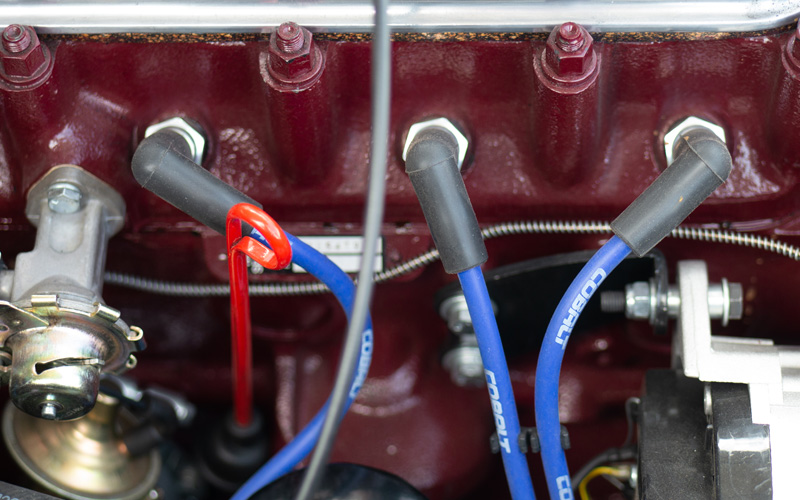
Credit: Photo by Moss Europe Ltd
Electrics
Lucas looms and switchgear is long lasting and easily serviceable. The distributor, however, doesn’t respond well to neglect so ensure it’s not worn or partially seized. The points, coil, condenser and cap are all potential problem areas so see it as a bonus if someone's already installed an electric ignition system.
Braking Bad?
Being so light, MGA brakes should feel good straight from the box. That said, various worthwhile upgrades are available - including the front disc conversion kit* which will instantly enhance an MGA's stopping ability. *The front disc conversion kit is for MGA 1500 only as the later cars had disc brakes as standard.
Running Gear
Untoward knocks or vague handling will be down to worn steering or suspension components. Lever arm dampers leak, especially if they’ve been badly rebuilt, so look for signs of fluid. You'll find all the bits you'll need in our Steering & Suspension range.
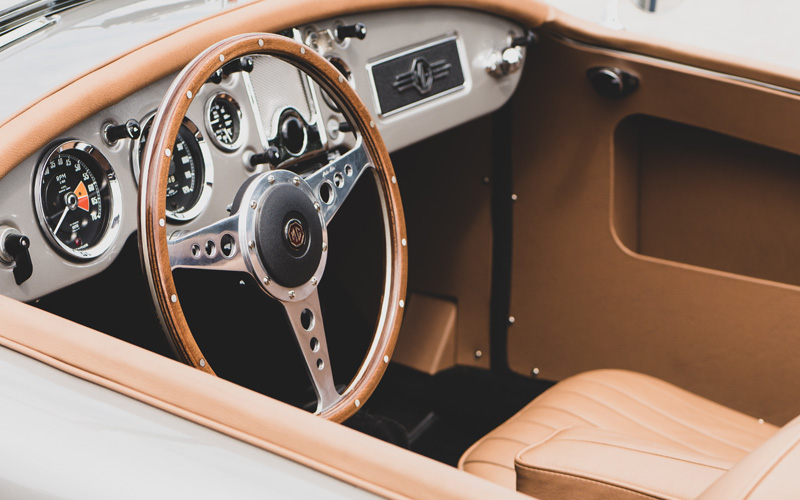
Credit: Photo by Moss Europe Ltd
Keep In Trim
It’s not uncommon to find a mismatch of seats, carpets, lights and bright work but don't fret - virtually everything from carpets, dashboards, trim and steering wheels is available in our Interior range.
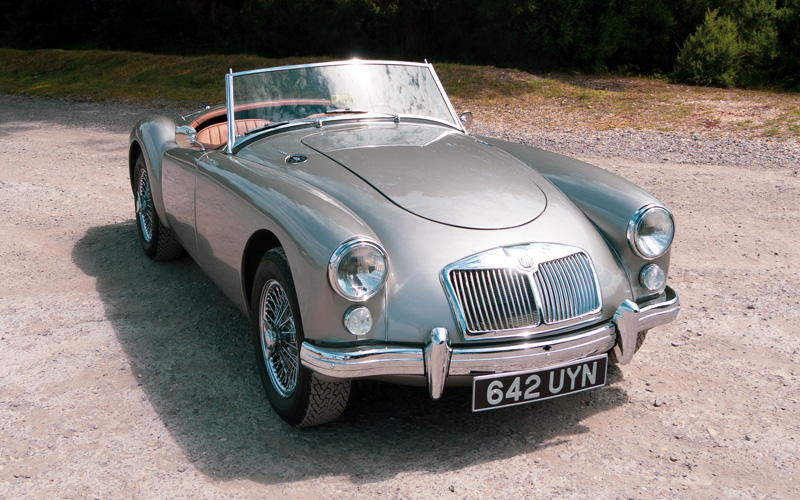
Credit: Photo by Moss Europe Ltd
How Much?
Because the Twin Cam is rare and very few come up for sale, expect to pay upwards of £40,000 assuming it's still got its original engine. Likewise, the De Luxe is likely to command a similarly high premium. A good, usable 1500 or 1600 will appear in the classifieds for between £20,000-£25,000, with the best examples being closer to £35,000. Generally speaking, cars without a roof fetch more than the coupé. Of course you can pay a lot less if you're happy to do most of the work yourself, with the cheapest MGA project starting at £8,000-£10,000.

Keep up with all the latest from Moss on our social pages
|
|













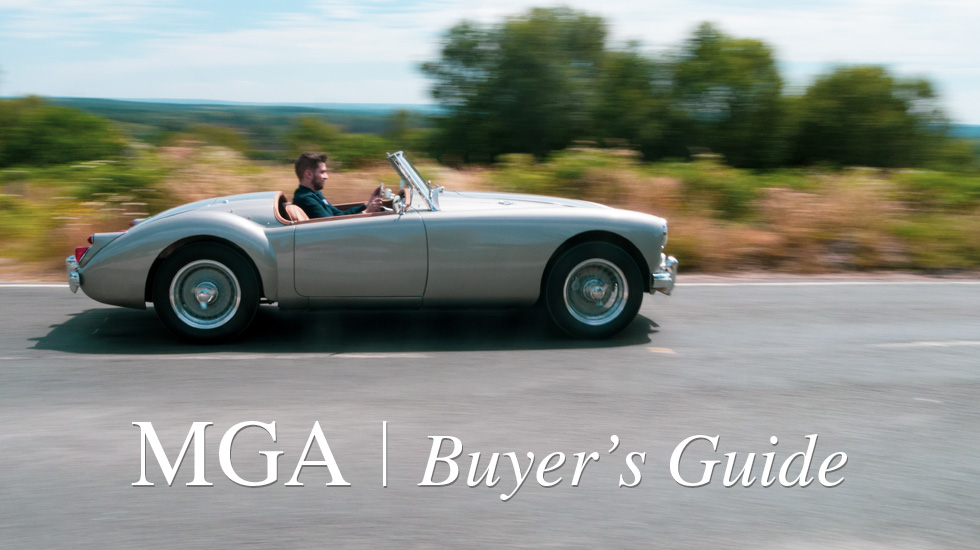



